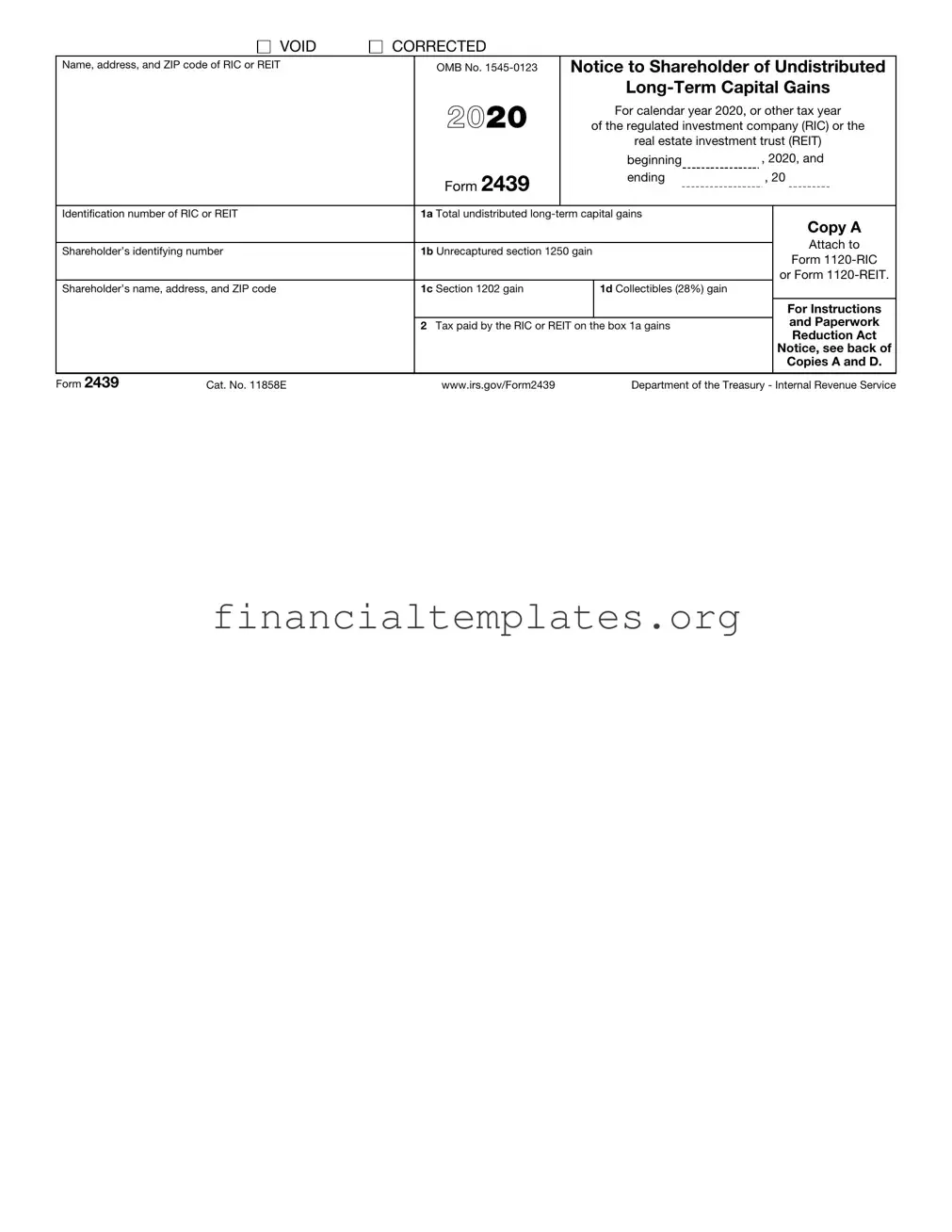The IRS 2439 form is akin to the IRS 1099-DIV form, primarily because both are used to report distributions. While the 2439 form is specific to reporting undistributed long-term capital gains by mutual funds or real estate investment trusts (REITs) paid to shareholders and taxes paid on those gains, the 1099-DIV covers dividends and distributions on all sorts of investments. Each serves the purpose of informing investors and the IRS about income that may affect the investor's tax liability.
Similar to the IRS 2441 form, the IRS 2439 connects with tax benefits, albeit with a different focus. The 2441 form is used for child and dependent care expenses, offering taxpayers a way to deduct care-related expenses from their taxable income. Despite their different applications — investment income versus care expenses — both forms feed into an individual's overall tax situation by providing mechanisms to reduce taxable income or report income that might not be captured through traditional wages.
The IRS 1099-INT form shares its purpose with the 2439 form as they both report income types that could impact an individual's annual taxes. While the 2439 form deals with undistributed capital gains from mutual funds or REITs, the 1099-INT form reports interest income from various sources like savings accounts and interest-bearing investments. Both are critical for accurately reporting income to avoid potential issues with the IRS.
The IRS Schedule D (Form 1040) is closely related to the IRS 2439 in the sense that it is essential for reporting capital gains and losses. Investors use Schedule D to summarize capital gains and losses from all sources, including those reported on form 2439. The information from 2439 helps to complete Schedule D, which in turn affects the taxpayer’s overall capital gains tax liability.
Similarly, the IRS 8960 form is related due to its role in calculating the Net Investment Income Tax, which might include income reported on form 2439. This form targets individuals, estates, and trusts with income above certain thresholds and involves a tax on investment income. Given that undistributed capital gains can form part of an individual's investment income, the 2439's reporting feeds into the calculation of potential liability on the 8960 form.
Another comparable document is the IRS 1041 form, used by estates and trusts to report income, deductions, gains, losses, and taxes due. Since trusts and estates can own shares in mutual funds or REITs, they may need to utilize information from the 2439 form for accurate 1041 completion. The interconnectedness of these forms underscores the complexity of tax reporting for entities with investment incomes.
The IRS 8824 form, albeit focusing on like-kind exchanges under Section 1031, shares a connection with the 2439 form through the principle of deferring taxes on certain kinds of income. While the 2439 form deals with capital gains that have been taxed at the fund level, the 8824 form pertains to the deferral of taxes on the exchange of real estate used for business or investment. Both offer strategies for managing tax liabilities related to investments.
The IRS W-9 form, although not a tax reporting form per se, is indirectly related to the 2439 form since it is often required by financial institutions to ensure accurate tax reporting on accounts. The W-9 form provides taxpayer identification numbers (TINs) to entities that pay dividends, interest, or other forms of income. In cases where 2439 income is reported, a W-9 may have been on file to assist in the accurate reporting and withholding as necessary.
Lastly, the IRS 706 form, used for reporting estate taxes, intersects with the IRS 2439 in scenarios where estates earn income from investments in mutual funds or REITs. Although the 706 form is primarily concerned with the valuation of an estate and its tax liabilities upon the death of an individual, capital gains and other investment income reported via form 2439 can affect the overall taxable estate value. Understanding the nuances of how these forms interact ensures comprehensive tax planning and reporting.





